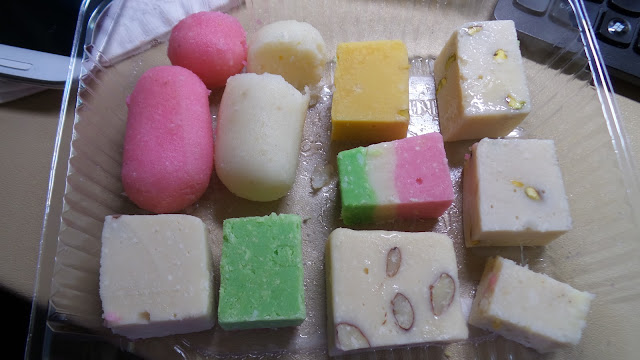We are a multi-cultural family. My husband's ethnic background is the easiest to explain, he grew up in the U.S. but was born in the Caribbean (Trinidad). His parents migrated from India. The cuisine that makes up his family traditions has a strong root in India, with a British island flare.
My ethnic composition is a bit more all-over-the-place. I was raised in Texas, my mom grew up in Michigan, and her parents were from Canada and the Midwestern U.S. A recent DNA test revealed that I have strong roots in Scandinavia, Africa, Western Europe, Ireland, and Italy/Greece. The food of my childhood reflects quite a bit of these cuisines.
I was raised in a family that was naturally curious when it came to culinary creations. I recall special dinners of recipes from all around the globe. It was not a frequent event, but often enough to spark my interest in trying new things.
Not only do my husband and I have different cultural backgrounds, but we follow different religions. The benefit of this situation is that there is no compromising on major holidays, as we each indulge in the traditions of the other's special day.
We have managed to avoid situations like the great stuffing debate that has plagued my family for decades. Our family tradition incorporates a northern-style stuffing into holiday meals. My aunt married a Southerner who cannot imagine a holiday without cornbread dressing doused in giblet gravy. This has been cause for much discussion over the years.
Occasionally my husband I find ways to incorporate our cultural practices into the other's events. I have made countless specialty cakes for his big holidays, and now we have a adopted the practice of bringing in a traditional Indian sweet into our observation of Easter.
 |
| Our package of Mithai for Easter 2016. The colors are perfectly spring. |
Mithai is a term used to describe a a collection of sweets. The word is Hindi in origin, but is used in cultures all across Asia. These sweets are usually of the India-origin variety, and a mix of Burfi (also spelled Barfi and Barfee) and Gulab Jamun.
Burfi is a fudge-like sweet that is made from some form of milk solid (powdered milk or milk curd in the form of paneer or ricotta). Boiled sugar is added to the milk solid to create the texture, and then flavorings such as cardamom and/or nuts are added. Burfi is typically adorned with gold or silver foil and is a big part of most Indian celebrations.
 |
| Plain Burfi Platter, adorned with edible silver foil. Festively perfect for any holiday. |
Other varieties of Burfi can include ingredients like chocolate, mango, rose water, and dried fruits. Add-in and flavor varieties vary by region, religion, event, and culture.
 |
| Pictured in the center (orange color) is Mango Burfi. |
The base recipe for Gulab Jamun calls for paneer (milk curd) to be molded and deep fried. After the frying process the product is boiled in a sugar water solution. Other varieties include coconut (added to the paneer), a flour-based dough, and a chickpea flour version. Coloring can be added to any of the varieties.
 |
| Coconut Gulab Jamun is made from Paneer and Unsweetened Coconut that have been formed into a log and deep fried, then boiled in a solution of sugar water with cardamom pods for flavoring. |
 |
| Fancier versions of Gulab Jamun can incorporate a cream filling, by splitting the sweet in half and piping in a creamy center. |
The sweets in a Mithai packages are not only delicious, but stunningly beautiful to look at. There are various form factors including blocks (as seen in my package of Mithai), rolls, fancy geometric shapes, object shapes (fruits of flowers), and adorned with decorative elements.
The next time you find yourself passing by an ethnic market, consider wondering in and asking for the Mithai. Many stores will sell mixed packaging, but some offer it by the piece.
There are many more Indian sweets varieties, beyond Burfi and Gulab Jamun. This article on Wikipedia is a great starting point for understanding the origin, options, and ingredients.
A common thread in many Indian Sweets is the lack of wheat flour, which makes Indian sweets a pot of gold for those who are gluten sensitive.





No comments:
Post a Comment
Note: Only a member of this blog may post a comment.